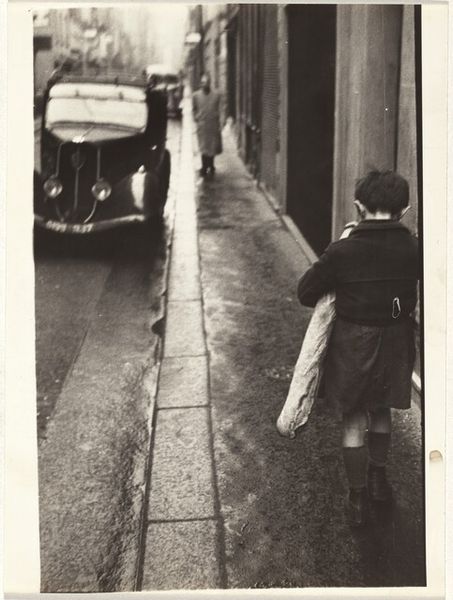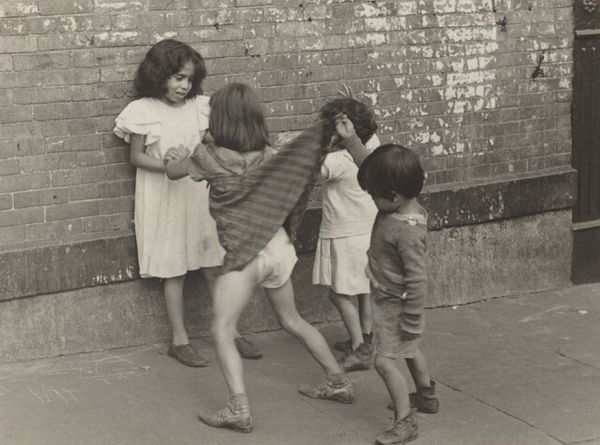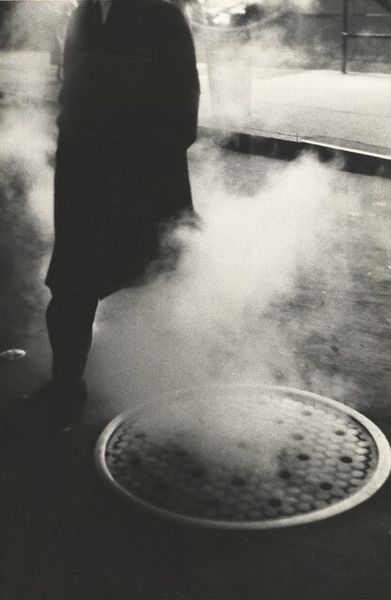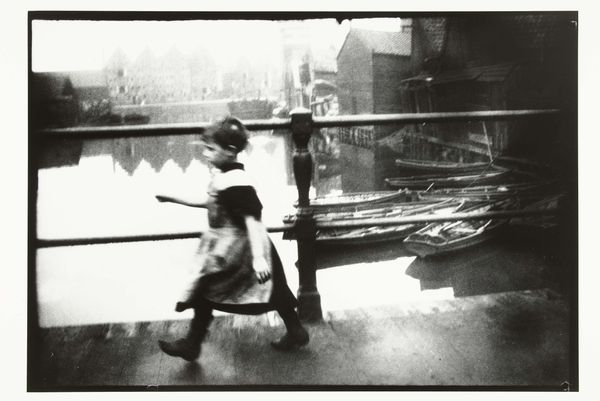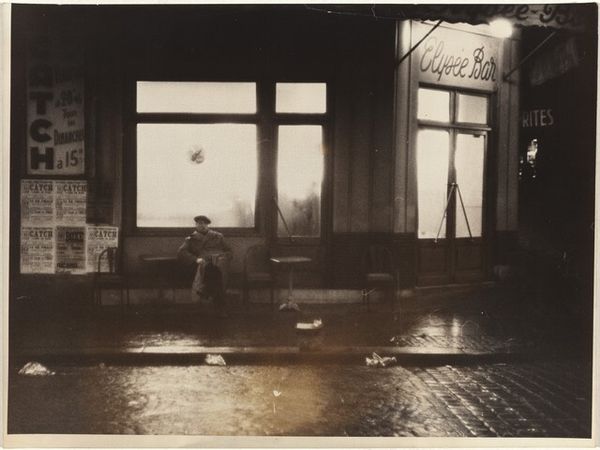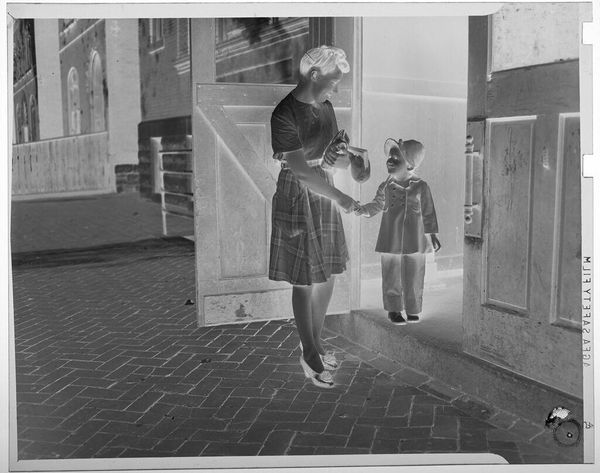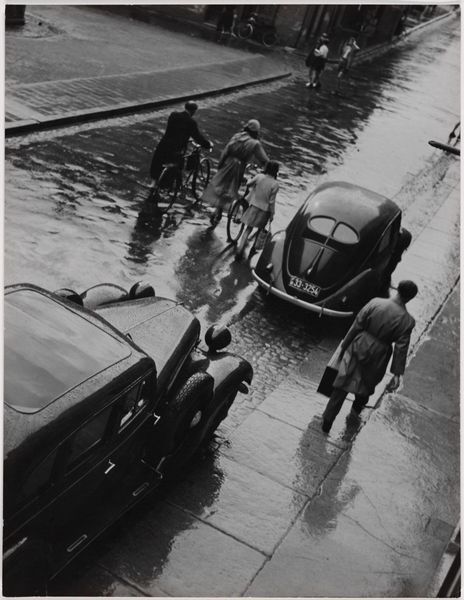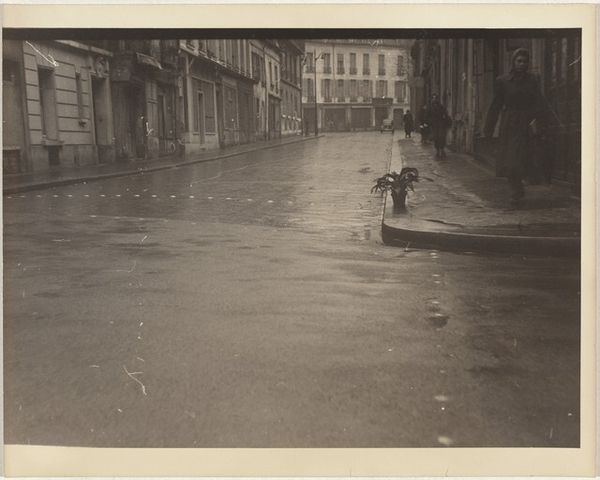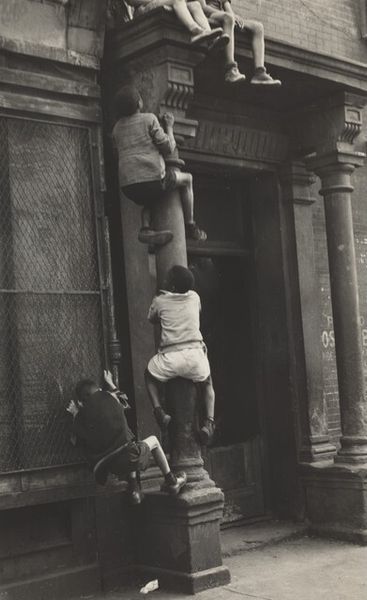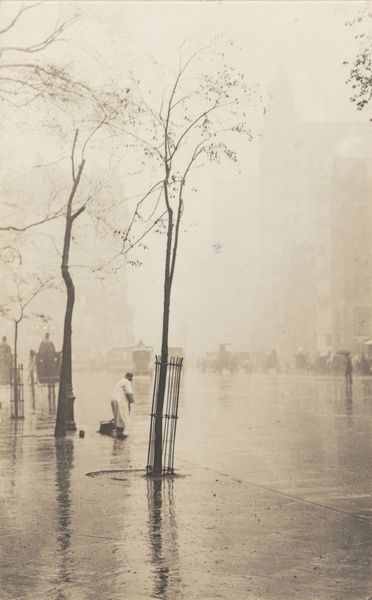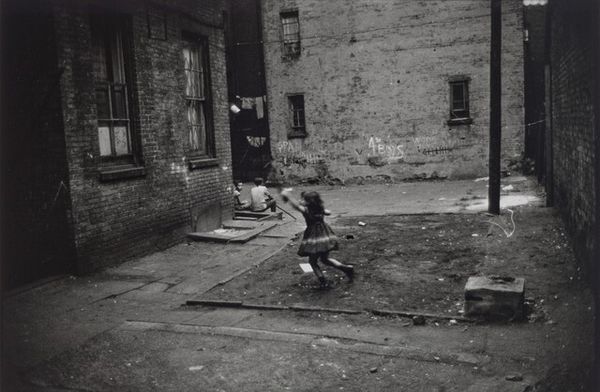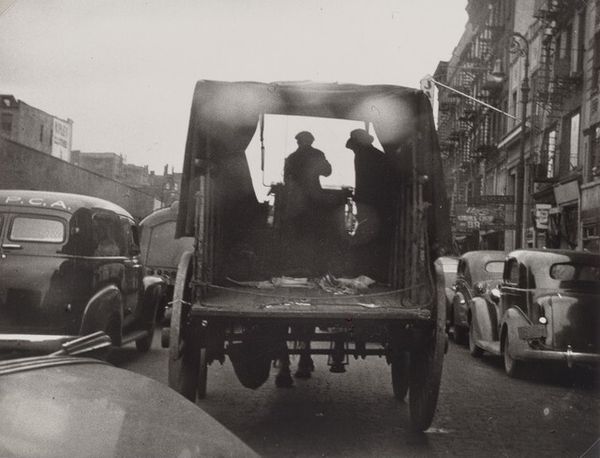
Dimensions: sheet (trimmed to image): 10.8 x 16.9 cm (4 1/4 x 6 5/8 in.)
Copyright: National Gallery of Art: CC0 1.0
Curator: This photograph, titled "New York," was captured by Helen Levitt in 1942. It's a gelatin-silver print. The image depicts two African-American subjects in an outdoor scene with a spray of water in the background. Editor: The atmosphere in this photograph is strikingly raw. There's an almost palpable sense of immediacy, a captured moment of daily life infused with an undeniable vulnerability, it feels both familiar and distant. Curator: It is this quality of feeling “familiar and distant” that I find intriguing. Consider how water is a purifying agent. Yet there is a car, children in the backdrop, all rendered indistinct by the haze; these symbols converge to evoke resilience against the grimy backdrop of poverty during the war years. It also alludes to both cleansing and chaos in that context. Editor: Precisely. Levitt’s composition prompts questions about social dynamics during that era, revealing both class and race at the height of conflict. The act of water cleanses some but the material cost to others who are barely visible. I see echoes of similar issues plaguing contemporary discussions around labor and gentrification. The water might symbolically suggest opportunity, yet that opportunity comes at a visible expense for a certain subset of the population. Curator: I agree completely. It’s interesting to examine Levitt's intention regarding symbolism; the way she uses black and white amplifies these elements within the frame. Street photography is a form of social record but she imbues that methodology with layers of interpretive complexity, almost as a painter. I'm drawn to that complexity because I think about how we look to our memories of these years to determine the current era’s value and course. Editor: The photo speaks directly to those historical-present dialogues; the use of this everyday moment to reveal broader intersectional social realities creates that effect. By framing these subjects as actors within larger structures – economic structures, power structures, symbolic orders – the image pushes past pure documentation and moves into a realm of subtle but pointed social commentary. Curator: Levitt certainly holds a place of importance for having the sensibility to find a narrative so charged with meaning, so deftly. It offers an important glimpse into the symbols that built modern identity during a period of social, racial, and political tension. Editor: And it does so without losing sight of the human element – the inherent dignity of its subjects.
Comments
No comments
Be the first to comment and join the conversation on the ultimate creative platform.

